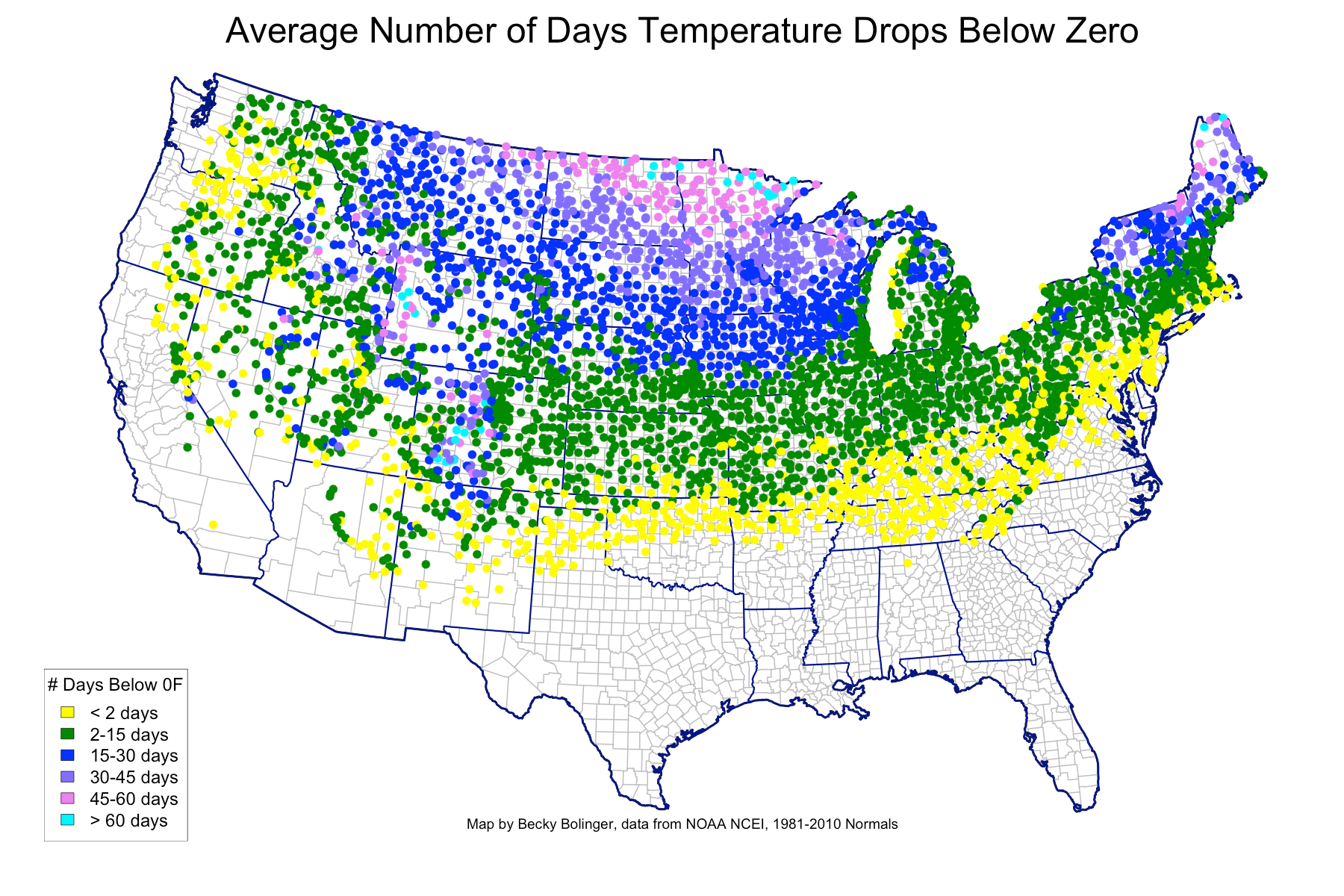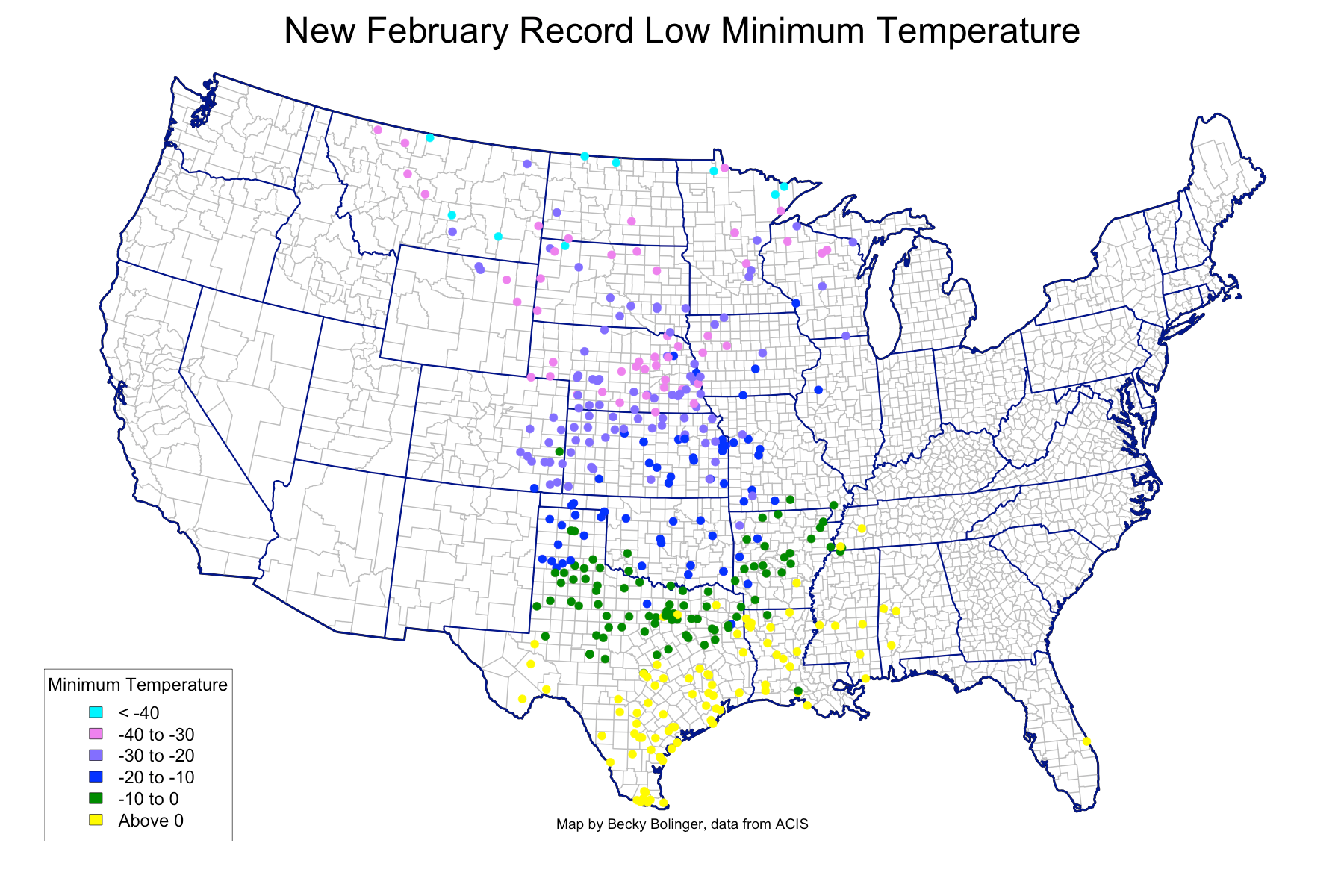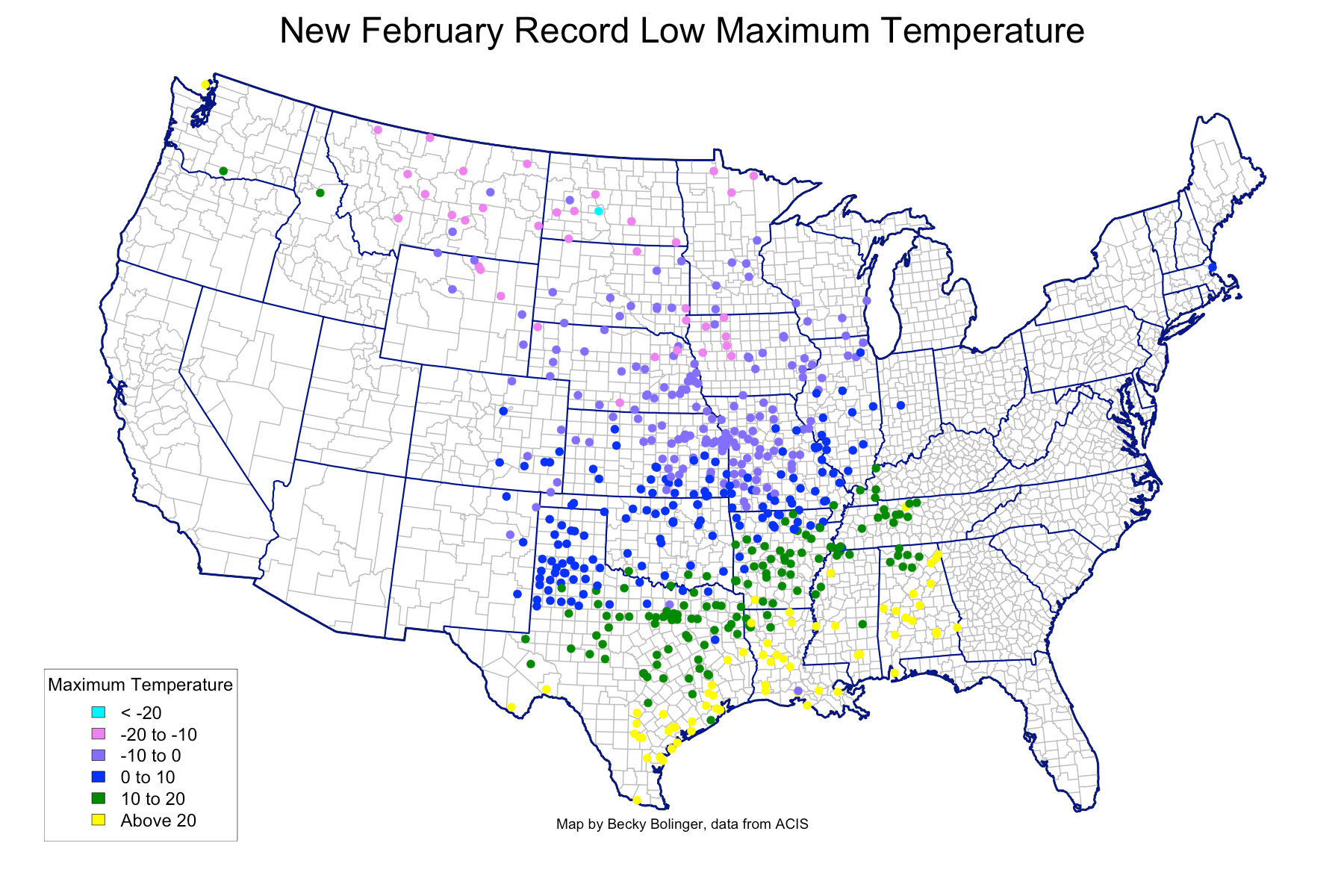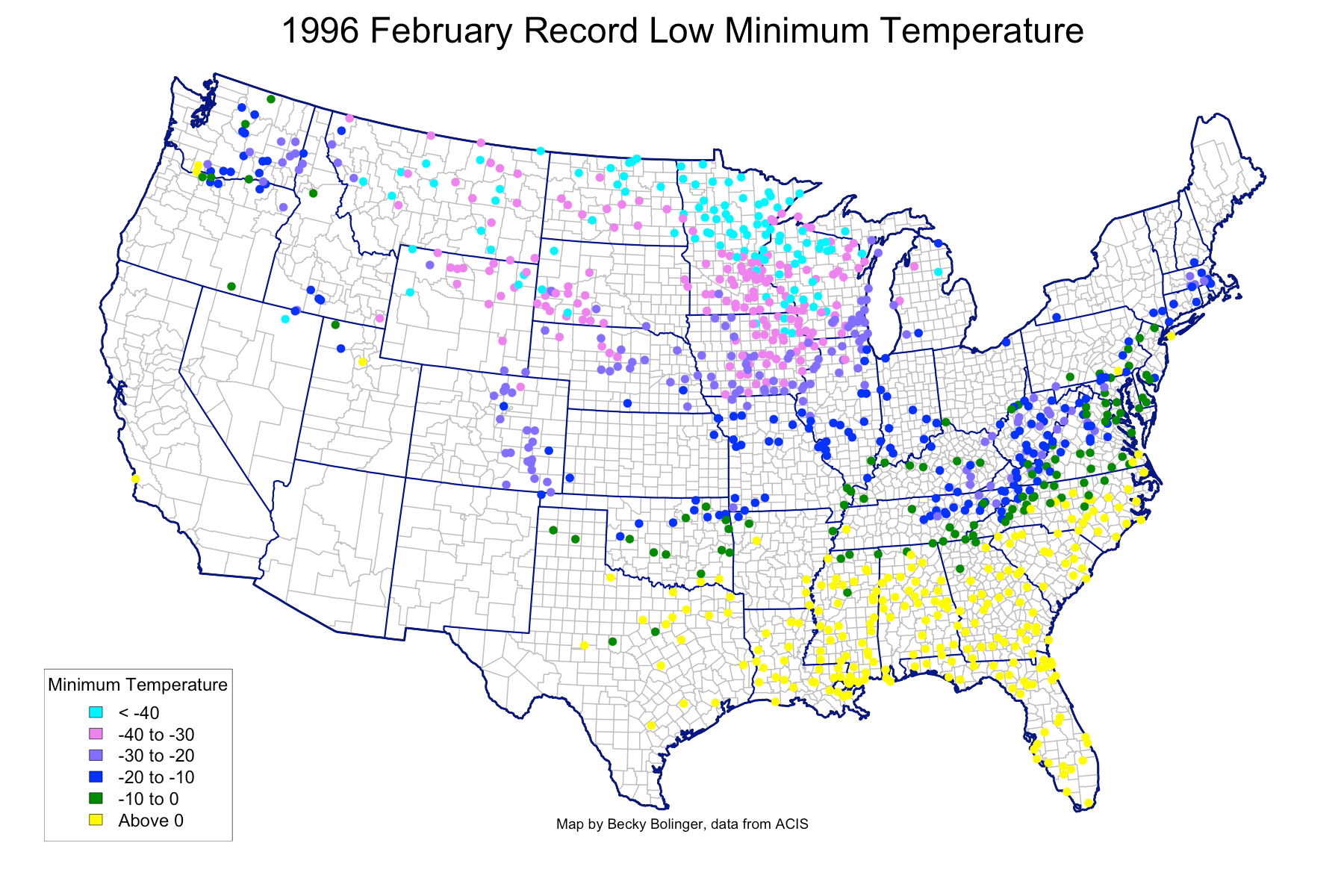
Last week was quite cold across much of the U.S., but was it extreme?

Last week was the coldest week of the winter, with subzero temperatures extending across a significant portion of our country, even in southern states like Texas. But, is it really that big of a deal? It is, after all, winter. It's supposed to be cold. Perhaps it was like this every day, like our grandparents keep telling us from their childhood.
It is true that this cold has occurred before. It's also true that this recent outbreak was extreme. Let's go over that a bit. First off, how often and where should we expect to see subzero temperatures in the lower 48 states?

This map shows the average number of days the low temperature is below 0°F in a year, according to NOAA's 1981-2010 climate normals. Yellow stations infrequently experience those extreme cold days, but it probably happens every few years or so. Look further north, or higher in elevation, and low temperatures below 0°F become more common. For the highest elevation Colorado and Wyoming mountains and isolated locations in North Dakota, Minnesota, and Maine can typically experience 60 days every year where the temperature dips into negative numbers.
How wide of an area experienced temperatures below zero in the last week? According to this map from the High Plains Regional Climate Center, which shows lowest minimum temperatures over the last 7 days, everywhere inside the purple contour observed a temperature less than zero, including northern Texas. The blue line separates where the coldest temperatures were below freezing vs. above freezing. Even down south of Louisiana and the most southern tip of Texas saw below freezing temperatures.

Did this extreme cold break any records? Daily records can happen quite often. More notably, this event broke monthly records. A monthly record means a station's daily temperature was the most extreme for the entire month of February. In the next two maps, we look at the stations that broke their record for coldest February low temperature in 2021 and coldest February high temperature in 2021.


For these long-term climate normal stations, 382 set new record low minimum temperatures this month, and 557 stations set new record low maximum temperatures. So, is that a record number of monthly cold records broken in February? Nope.
Both February 1996 and February 1989 had more cold records. February 1989 had some very cold maximum temperatures. The number of records 1989 still holds are 1,280 for maximum temperature and 554 for minimum temperature. For 1989 (see map), the cold outbreak was shifted a bit west, with many of the records occurring throughout the Rockies and the west coast.

In February 1996, the minimum temperatures take the cake. Records still standing from 1996 include 1,030 maximum records and 933 minimum records. For the 1996 event (see map), many of the cold extremes occurred in the southeast and along the Appalachians.

For some of us oldies, 1996 doesn't seem that long ago. But let's remember, there are full-grown adults old enough to legally purchase a beverage at a bar, who weren't alive for the February 1996 cold outbreak. This means, that for a lot of our country's population, this February's event had the coldest temperatures they've ever experienced!
Next question to attack - is it possible that the coldest temperature in a station's entire period of record could have happened this February. The answer is - yes! Here's the map of the long-term climate normals stations that set new all time cold records.

A whopping 206 stations observed all-time record low temperatures. John Martin Dam, which recently set the all-time hottest record for the entire state of Colorado (at 115°F), tied its record low of -27°F on February 15. Last time it got that cold was in 1984. The Roundup Montana station set a new low record of -43°F on February 12, and then dropped to that temperature again on February 13! Its previous low record was -39°F. The coldest record of these all-time records was in Ely Minnesota, which bottomed out at -50°F.
Let's answer one final question – is February the most common month to have the coldest all-time temperatures for stations? Nope, that honor goes to January. For all the long-term climate stations, 3,430 of them have their coldest all-time temperatures in January. February comes in second with 1,997 stations, and December is 3rd with 1,480 stations. Check out this interactive map to see what the coldest all time temperature is near you and when it occurred!


